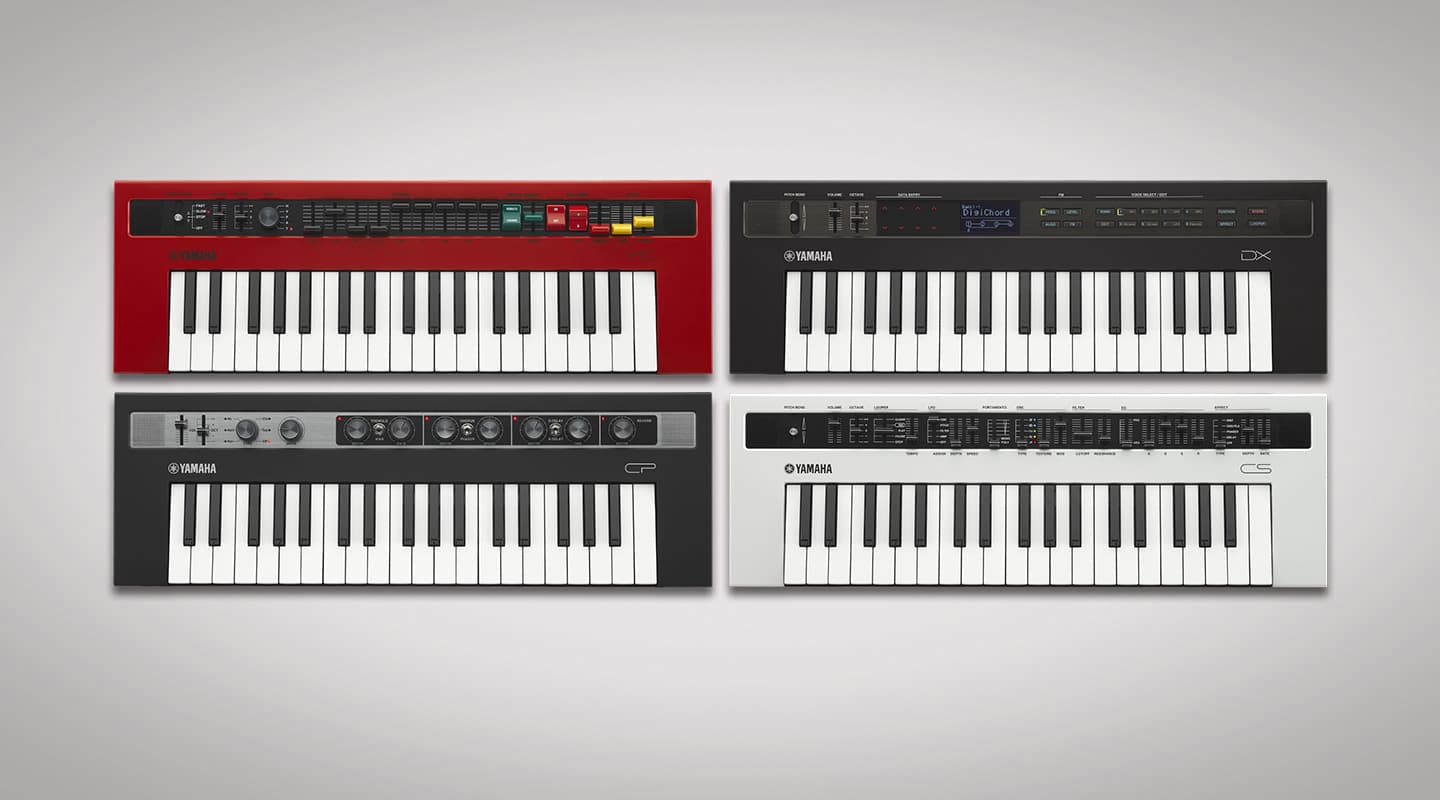
Review: Yamaha Reface Mini-Keyboards
The Yamaha Reface range of keyboards look a little toy-ish. Which is fine, because they deliver on the fun.
When four battery-powered baby keyboards with mini-keys and built-in speakers arrived at the AT office, no one was expecting much. To be honest we could barely muster the energy to bust them out of their boxes. But, boy, are we glad we did. The office is hooked and I can say the Yamaha Reface is the most fun I’ve had with a keyboard in years.
The Yamaha Reface family consists of four mobile mini-keyboards, each based on a classic Yamaha keyboard from yesteryear. They all sport four octaves of mini-keys, and are capable of an impressively broad spectrum of sounds. The back panels feature USB and MIDI connectivity, an Aux In port, headphones output, and two 6.5mm line outputs for stereo.
Reface isn’t for the purists — although plenty of synth nerds will indulge, no question — rather, they’re built for portability, playability and fun. They hit a sweetspot where you’ll be just as happy popping one in a backpack, jamming with friends around a campfire, or laying down synth lines in your studio.
No one is suggesting Reface will replace your hammer-action 88-note controller keyboard or even the synths they’re emulated on. In fact, whether they’re an utterly faithful recreation of the vintage original or not is irrelevant — start playing with one and you won’t care in the slightest. They’re endlessly tweakable, portable, solid, and boast a very impressive sound.
NEED TO KNOW
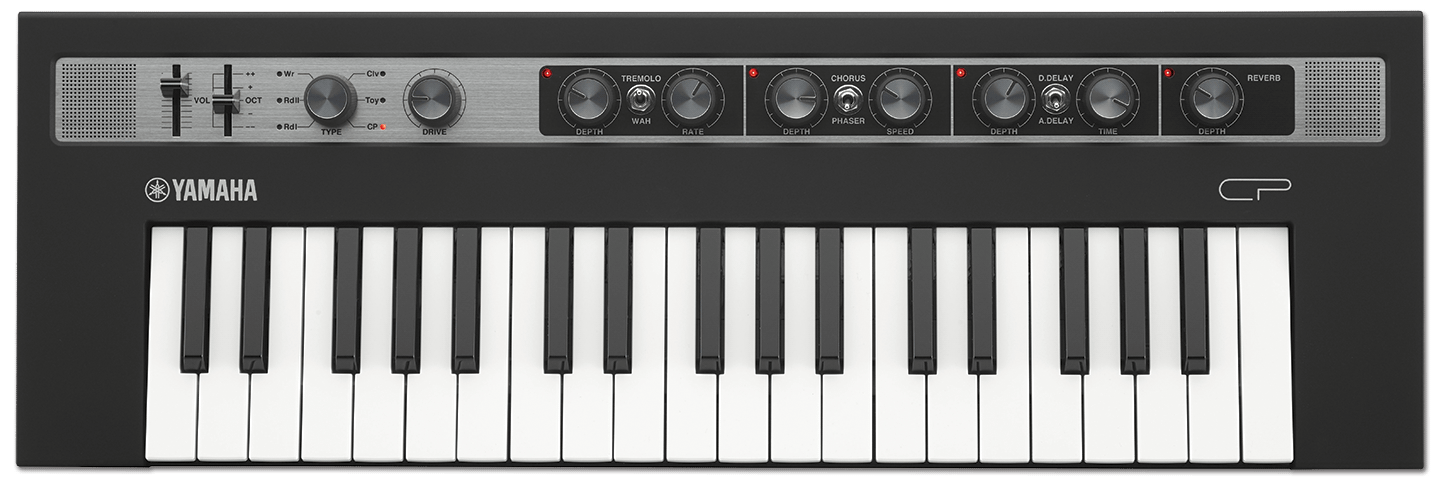
REFACE CP
The Reface CP emulates a number of vintage electric pianos including the Fender Rhodes, CP80, Clavinet and Wurlitzer. Of the four, this keyboard probably made the biggest impression. It dynamically responds to touch with a sensitivity and maturity that far surpasses its toy-like exterior. And to really get the most from the sounds, the CP has a sustain pedal port on the back. Don’t let the minimalistic and retro controls fool you — tons of tones can be pulled from this thing. Wind up the Drive knob to get some tasteful break-up when you dig in, or flick the Wah switch for some groovy funk jams. Yamaha has nailed the analogue delay emulation — chuck on the Wurlitzer sound and dial in a slap-back setting to be time-machined into a ’60s jazz bar. Get some cans on, close your eyes, and you might just think you’re playing the real thing.
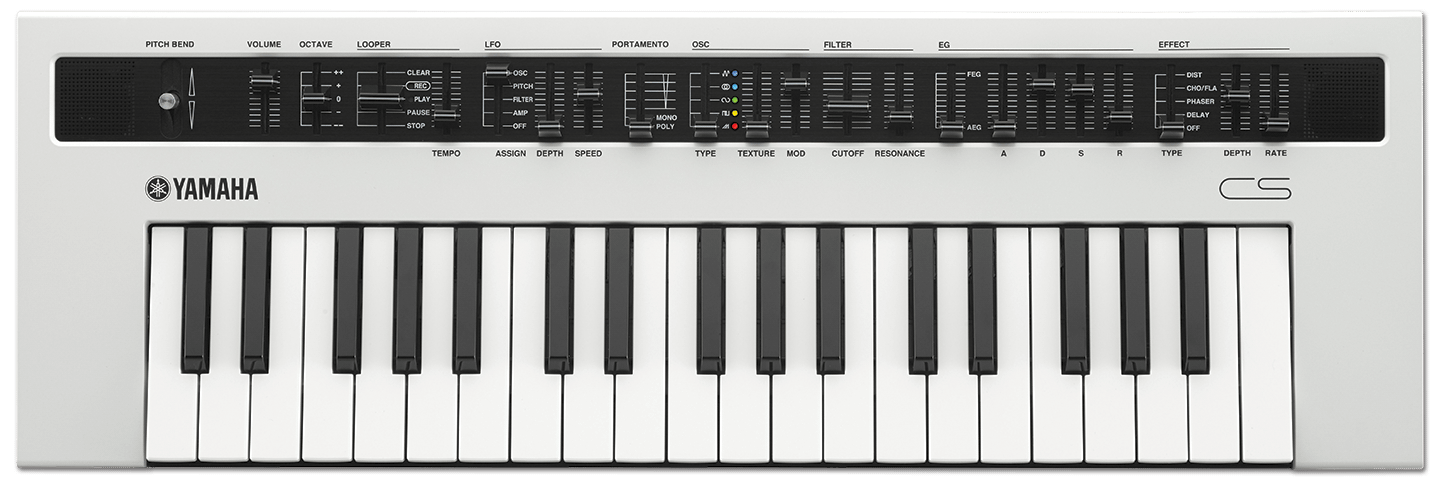
REFACE CS
The Reface CS is an analogue-modelling subtractive synthesizer, taking after the Yamaha Motif XF. Its single oscillator has five waveforms with separate Texture and Mod sliders, giving you a pretty diverse sonic platform right off the bat. It’s also got what’s probably the most user-friendly built-in looper I’ve come across in my life, freeing up both hands for some radical on-the-fly tweakage. There’s a fair bit of functionality in the CS — more than you’d expect from something that’d fit in a backpack. It instantly ignites the creative hemisphere of your brain. The controls are refreshingly ‘what-you-see-is-what-you-get’ — no menu-scrolling here, just a well laid-out dashboard of sound-creating potential. The LPF Cutoff and Resonance sliders are responsive and musical, and the Portamento is smooth. Depth and Rate sliders adjust the built-in effects, though the lack of reverb leaves a small void.
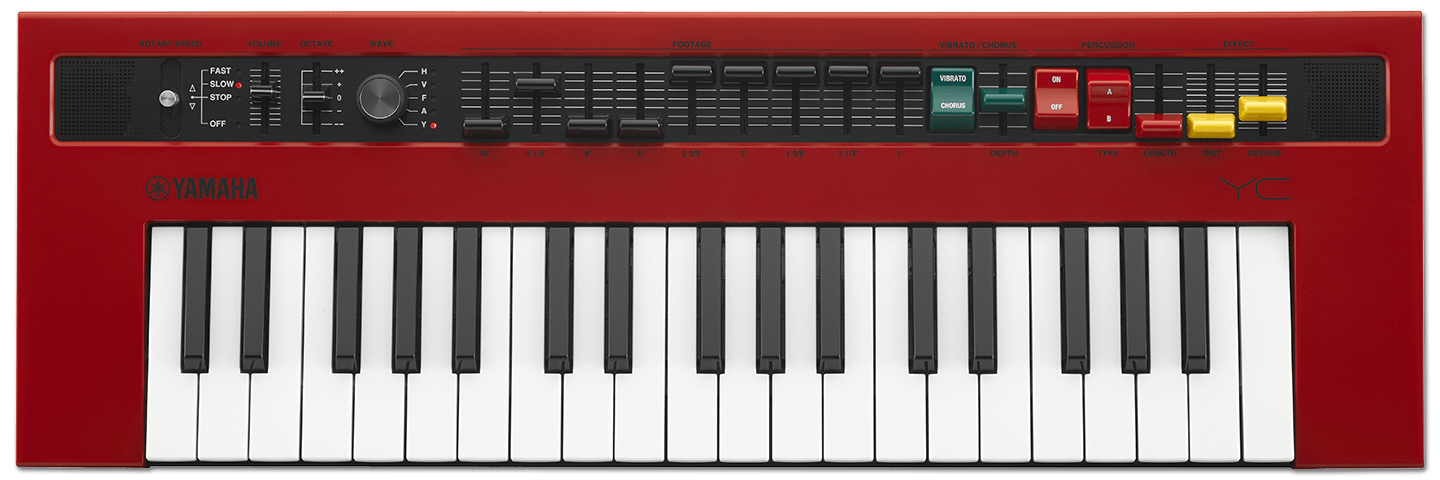
REFACE YC
What’s a family of mini-keyboards without an organ; and the Reface YC fits the bill magnificently. Sporting a Nord-like maroon paint job, the YC has five voices (or waves) that emulate different vintage organs, including the Yamaha YC-45D. Its tone has oodles of power — dropping down the octave switch reveals a big, punchy low end. The lever on the far left toggles the speed of the Leslie rotary cabinet, modelled realistically in stereo. The Percussion switch spices up jazz organ tones, and the adjacent slider and switch adjust the percussion length and type, respectively. Nine drawbars give you harmonic control over each voicing. Pair the second or third voicing with some distortion to get a dirty ’90s rock organ sound, or pull all the drawbars down and crank the reverb slider to create a majestic church organ. The possibilities will keep you tinkering ’til the cows come home.
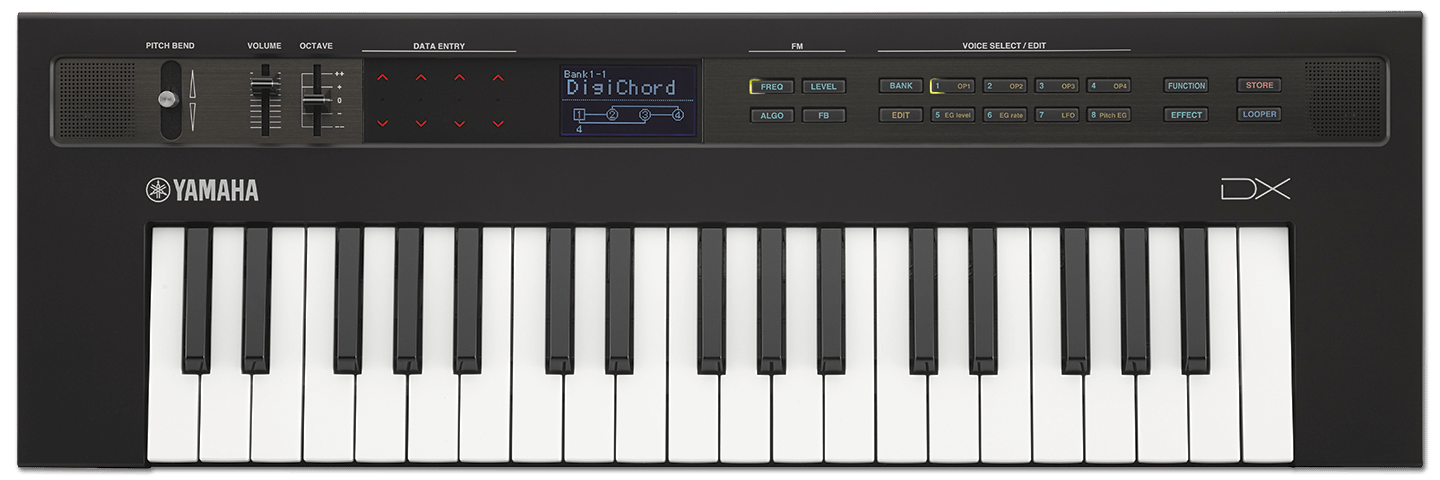
REFACE DX
At first glance, the Reface DX oozes ‘hi-tech’ — and given it’s an FM synth, I guess it should. Not quite as grab-’n’-go as the CP or CS, the DX requires a little persistence to crack its code — but it’s sure to please once you put some time into it. It excels at warm or airy pads, gritty techno leads, DX7-type electric piano tones, wobble synth bass, tubular bells, marimbas, and heaps more. The four red-lit touch buttons assign themselves to tone-specific FM-synth settings, displayed on the screen. There’s an effects section too, and a built-in looper. You can hook up a sustain pedal to fully enjoy some of the tones. The DX may be the most complicated Reface, but it’s also the most full-featured; I reckon it’s close to gig-worthy — as long as your fingers can navigate the mini-keys.
We get the film rolling on our first impressions of the Reface family.
















RESPONSES